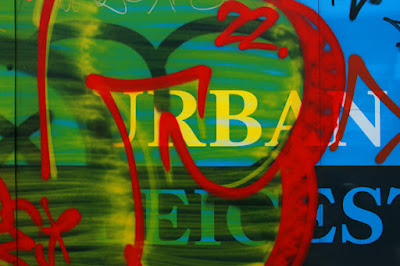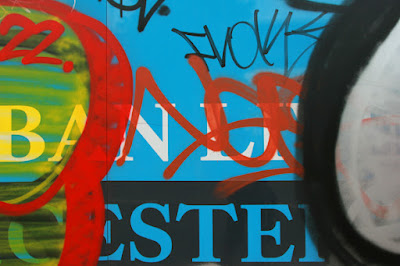 |
| All Images: West Leicester, June 2022 |
"Beyond an involvement with the flexuous qualities of Hydra (sinuosity, ogee, curvature and curlicue), Hydraglyph emphasizes how the visual shape of consonants deviates from vowels and how such shapes express the nonlinear and barbaric musicality of such consonants, Hydraglyphs are the diagrams of cacophonic and sonic aspects of middle-eastern consonant alphabets, or abjads.
"The term 'snake writing' associated with the excessive curvature of letters, as in Arabic and Pahlavi languages, is more than anything a diagrammatical approach to the sound of these consonants, which is a nonlinear but continuous process of vocalization formed by different intensities, vibrations and forces employed in different phases of vocalization. Hydraglyphs or draconic letters of middle-eastern consonant alphabets are barbaric musical notes in themselves.
"Close observation of the letters of Pahlavi, Hebrew, Arabic or Samaritan alphabets will reveal that they diagram an exploded view - as in industrial drawings, the view of an object after a controlled explosion in space - of a greater coil (the Mother of all Monsters) or entanglement. To write in these letters is to indulge in dracolatry, a worshipping of ancient serpents. Hydraglyphs, as letters of middle-eastern consonant alphabets, are disentanglements - remaining wreathed and coiled in themselves - of dynamic complexities; they are written and characterized by gates and thresholds.
"The first element of a novice's initiation into middle-eastern calligraphy is to learn to apply different but constant forces and pressures - not in the sense of a constant increase or decrease of forces - to various regions and each part of the letter in flowing manners. Such forces and flows are commonly epitomized as a series of movements including lateral undulation, sidewinding, side-pushing and concertinaing. The application of a new force during the process of writing is usually accompanied by a twisting of the tip of the pen and a deviation from the already-established path into a new twist; the letter is constituted of a thousand gates passing onto each other. Every twist constitutes a temple-pylon to a new region demanding new forces, unforeseen developments, variations and dynamic surprises - Tiamaterialistic miracles of all kinds.
"Greco-Roman letters are shaped by applying nearly constant or invariable forces on different parts; each letter possesses an architectonic coherence between the beginning and the end. Hydraglyphs, however, perpetuate themselves through the ceaseless emergence and subsidence of forces passing through different thresholds. Shape, in this sense, is defined by gradients (antechambers) rather than fixed boundaries (ostium). The outcome of this fluctuation is a spiralistic configuration or a coiling structure which characterizes middle-eastern alphabets.
"In the majority of such middle-eastern letters, a precise endpoint, a solid death, never occurs: the calligraphic letter is let loose to slide freely as the shape concludes softly by developing a tail at the point that the letter is written.
"But is the tail the end of the monstrosity? Such immersion into a gradient of softness or decay, as opposed to the emphatic death of the Greco-Roman cast and moulded letters, recurs in the vocalization of middle-eastern vowelless alphabets. When the vocalization does not undergo a death or complete termination (the definite end on the lips) as in the Greek and Roman languages, it is fulfilled by a gradual cessation, or to be exact, a softening rather than a stopping. Death in writing and vocalization is followed by impermeability and linearity of vocalization: for middle-eastern alphabets, however, it is decay that chisels its way through death, to ensure the continuation of softness." [1.]
[1.]: Reza Negarestani, 'Cyclonopedia', Melbourne, Aus. re.press, 2008









No comments:
Post a Comment